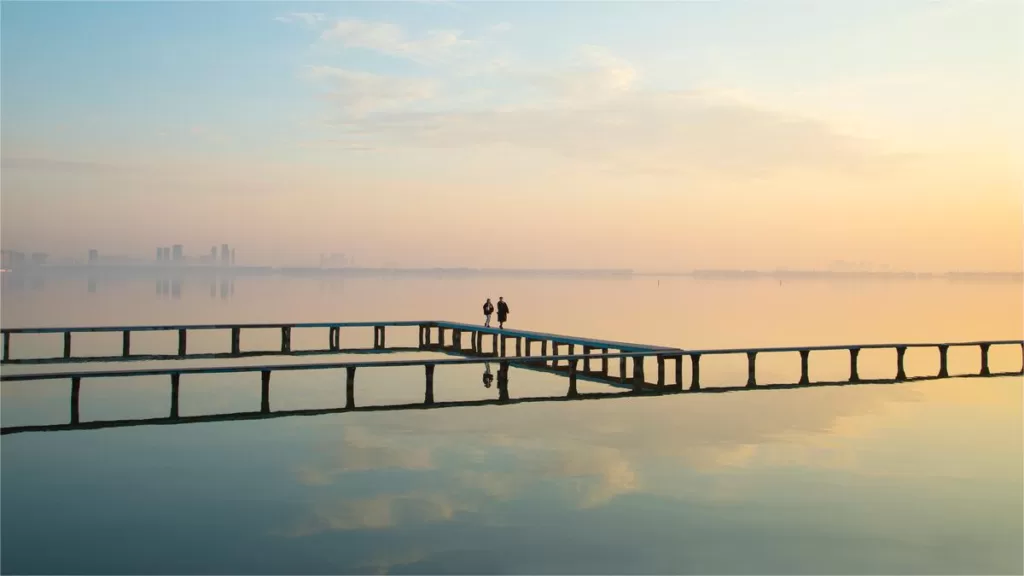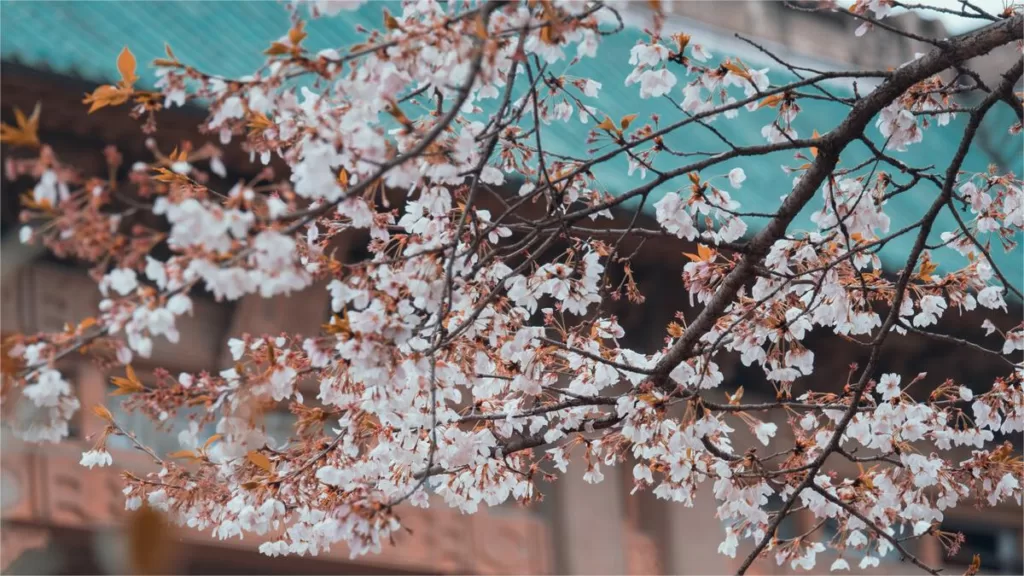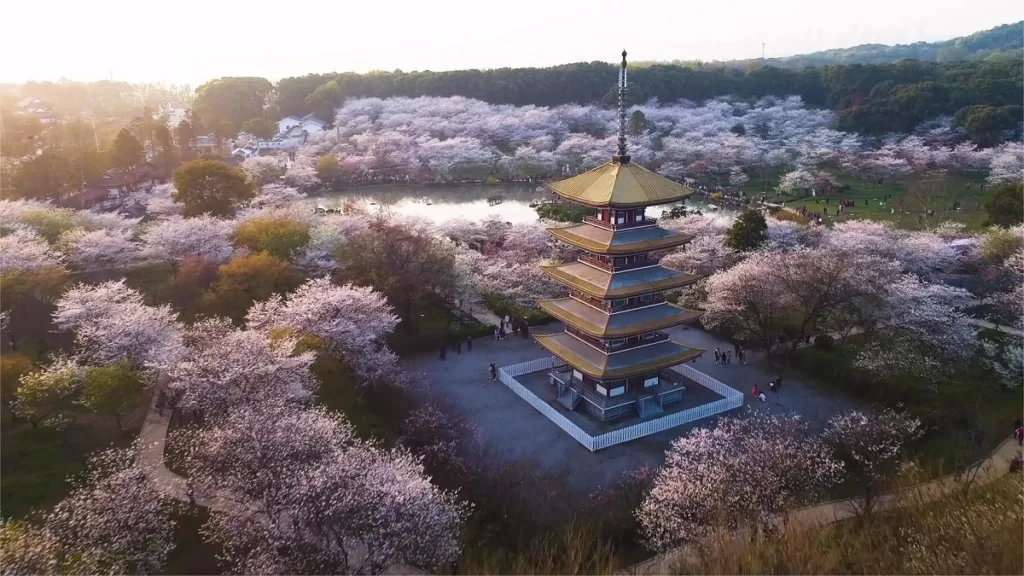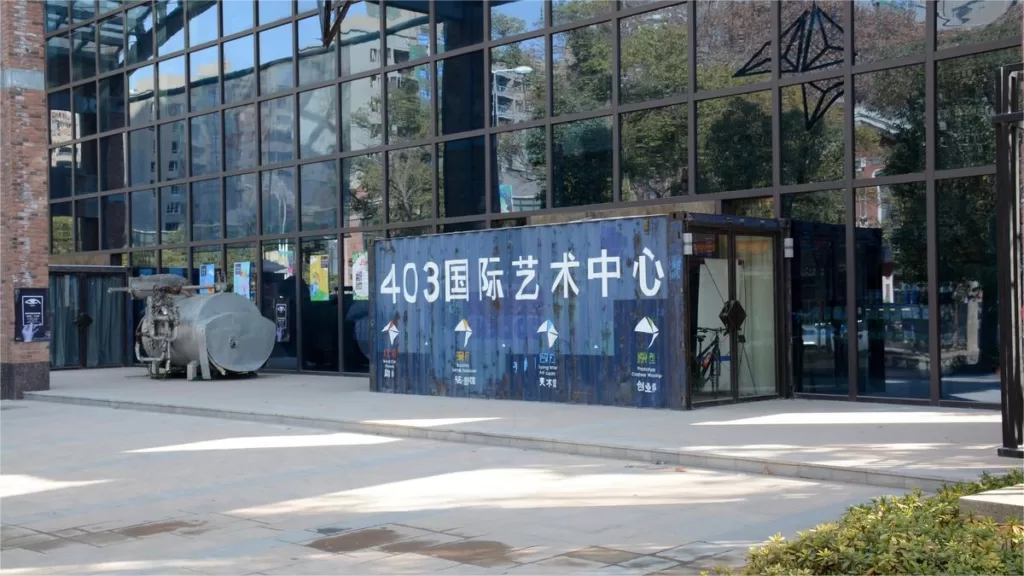Baotong Temple (宝通寺), with its rich history dating back over 1,580 years, stands as a testament to the enduring spiritual and cultural heritage of Wuhan, China. This ancient temple, originally founded during the Southern Dynasty, has undergone numerous name changes and renovations throughout the centuries. Today, it is a magnificent embodiment of architectural beauty and religious significance, making it one of the most revered and historic temples in Wuhan.
Baotong Temple’s origins can be traced back to the Liu Song Dynasty, during the period of 420-479 AD when it was initially known as Dongshan Temple. It underwent a series of name changes over the centuries, ultimately becoming Baotong Temple. During the Tang Dynasty, it was known as Mituo Temple, and in the Southern Song Dynasty, it was renamed Chongning Wanshou Temple. These name changes reflect the temple’s dynamic history and its continuous relevance throughout the ages.
The current Baotong Temple, as we see it today, was reconstructed during the Qing Dynasty in the fifth year of Guangxu’s reign (1879). It is renowned for its grandeur and meticulous architectural details, surpassing many other temples in Wuhan. One of the prominent features of Baotong Temple is its three-eyed springwater and the remarkable stones found on the temple’s mountain. These natural elements have contributed to the temple’s fame and tranquility. However, the most iconic structure within the temple grounds is the Hongshan Pagoda.
Table of Contents
- Basic Information
- Location and Transportation
- Map of Baotong Temple
- Highlights of Baotong Temple
- Vlog about Baotong Temple
- A Brief History of Baotong Temple
- Useful Tips Summarized from Reviews
- Attractions near Baotong Temple
Basic Information
| Website | https://www.baotongsi.com/ |
| Estimated Length of Tour | 2 hours |
| Ticket Price | 10 RMB |
| Opening Hours | 7.00 – 16.00; Last admission: 15.00 |
| Telephone Number | 0086-027-87884539 |
Location and Transportation
Baotong Temple is situated at the southern foot of Hongshan Mountain in the Wuchang district of Wuhan, Hubei Province, China. Its precise address is 549 Wuluo Road. To get there, you can choose one of the following ways:
Bus: Take bus 59, 401, 413, 503, 510, 518, 521, 538, 564, 576, 583, 593, 596, 618, 702, 703, 715, 723, 728, 797, 804, or 811 and get off at Baotong Temple Stop (宝通寺站).
Metro: The closest metro station to the temple is Baotongsi on line 2. After getting out of the station from Exit D, you wil be standing right at the entrance of the attraction.
Map of Baotong Temple

Highlights of Baotong Temple
Hongshan Pagoda

The Hongshan Pagoda, originally known as Linji Pagoda, was built during the Yuan Dynasty and has undergone several renovations since. This towering structure stands at 45.6 meters and consists of seven levels. Visitors can enter through a small circular door at the base and ascend a series of steps that wind their way up to the top. From the pinnacle of the pagoda, breathtaking views of Wuhan unfold before your eyes. The East Lake sparkles like a mirror, and the Yangtze River flows gracefully like a ribbon. The Yangtze River Bridge stretches across hills, and the historic Jianghan Pass Tower stands tall in the distance.
Religious Artifacts

Baotong Temple is home to various religious artifacts that reflect the rich history of the temple and its spiritual significance. Among these are the Tang Dynasty cast iron Buddha, standing at an impressive 4 meters in height with a detailed and expressive seated posture. Additionally, the temple houses a remarkable artifact known as the “Wanjinzhong,” a massive iron bell cast in 1240. The bell’s body is made of iron, adorned with bronze around the edges, and is characterized by inscriptions that convey wishes for the emperor’s longevity, the enduring prosperity of his ministers, and the well-being of the nation and its people.
Memorial Grounds for Heroes

The historical significance of Baotong Temple extends beyond its architecture and religious artifacts. Its hallowed grounds serve as the resting place for numerous heroes and martyrs, with various memorial sites dedicated to their memory. One of these is the memorial for Shi Yang, a leader of the “Erqi” Strike, who served as the legal advisor for the Wuhan Workers’ Federation and the Jinghan Railway General Workers’ Union. After being arrested and executed for his role in the strike, he was initially buried on the western side of Hongshan. In 1953, his remains were relocated to Baotong Temple.
On the northern slopes of Hongshan, the “Gengzi Martyrs’ Tomb” commemorates the seven martyrs who opposed the rule of Empress Dowager Cixi and were killed by the imperial army. In the eastern section of Hongshan, there is a public cemetery for the officers and soldiers of the Northern Expedition who lost their lives during the 1926 campaign to capture Wuchang City. It is a place of honor and remembrance for those who made significant sacrifices in the pursuit of justice and freedom.
The Enigmatic Realm: Fajie Palace

Beyond the main hall of Baotong Temple, there lies a hidden treasure within the temple complex, the Fajie Palace. This enigmatic palace represents the esoteric teachings of Vajrayana Buddhism. Inspired by the Tang Dynasty’s Vajrayana Buddhism and its “Five Mandala” form, this palace was constructed after Master Chisong’s visit to Japan and his return to China. Originally, the palace featured intricately carved wooden structures, but these have since been lost to the ravages of time. Today, the palace is adorned with golden roof tiles and features five pavilions, each representing the cardinal directions and a central point, symbolizing the Five Buddhas. The pavilions are adorned with ornate carvings and flying eaves with claw-like brackets, demonstrating a rich blend of traditional and ethnic architectural elements. The presence of the Fajie Palace within the Baotong Temple complex makes it a unique and significant site, as it is the only Vajrayana Buddhist structure in the Wuhan region.
Vlog about Baotong Temple
A Brief History of Baotong Temple
Baotong Temple, located in Wuhan, has a history spanning over 1,500 years. It was originally built during the Liu Song Dynasty (420–479) and was first known as Dongshan Temple. During the Tang Dynasty (627–649), it was renamed Amitabha Temple. In the Southern Song Dynasty (1234–1236), monks from Dahong Mountain Temple moved here, renaming the area Hongshan and granting the temple the title Chongning Wanshou Chan Temple.
During the Yuan Dynasty (1280–1291), the Hongshan Pagoda was constructed, but the temple was later destroyed in warfare. Under the leadership of Abbot Huashi in 1332, the temple was expanded, and by 1334, its reconstruction was completed. In 1381, Zhu Zhen, the Prince of Chu and son of Emperor Hongwu, rebuilt the temple while constructing his palace in Wuchang. Further renovations occurred in 1457 under Prince Jing of Chu. In 1485, it was officially renamed Baotong Chan Temple, a title that has remained ever since.
The temple underwent extensive restoration in the Qing Dynasty, particularly in 1676 and 1792. However, it suffered damage during the Taiping Rebellion (1851–1861) and was rebuilt between 1865 and 1879. In 1911, it briefly served as the command center for revolutionary forces during the Wuchang Uprising. In the 20th century, further renovations took place, including repairs in the 1950s and expansions in the 1990s, solidifying Baotong Temple as a significant Buddhist site in Wuhan.
Useful Tips Summarized from Reviews
Lively Atmosphere: As you enter Baotong Temple, you’ll be greeted by a large tree and a multitude of pigeons scattered on the ground and perched on the tree branches and roof eaves. Additionally, you’ll notice a significant population of cats roaming around in the small forested area behind the temple.
Vegetarian Meals: The temple offers vegetarian meals starting as early as 10:00 AM. These meals are provided free of charge, and visitors can help themselves to the food and wash their own bowls afterward. The dishes are typically prepared with mild flavors, low oil, and low salt content. Due to the popularity of the meals, it’s advisable to either avoid peak dining times or arrive early if you wish to partake.
Baotong Temple’s Significance: Baotong Temple is renowned in Wuhan as a place where people come to pray for romantic relationships and marriages. One of the main attractions within the temple is the Jade Buddha Hall, where visitors can offer prayers and seek blessings for their romantic endeavors.











The architecture of Baotong Temple is very similar to that of the Forbidden City in Beijing. With its red brick walls and yellow structures, along with flying eaves and upturned corners, it makes for excellent photo opportunities.
Opposite the temple is the Wushang Dream Era Commercial Circle (武商梦时代商圈), where there is a food court on the B1 level. After visiting the temple, you can take a stroll around the area and conveniently grab lunch.
There weren’t many people at Baotong Zen Temple. First, I visited the shopping center opposite the temple and took a panoramic photo of the entire temple. After that, I went to explore the temple itself.